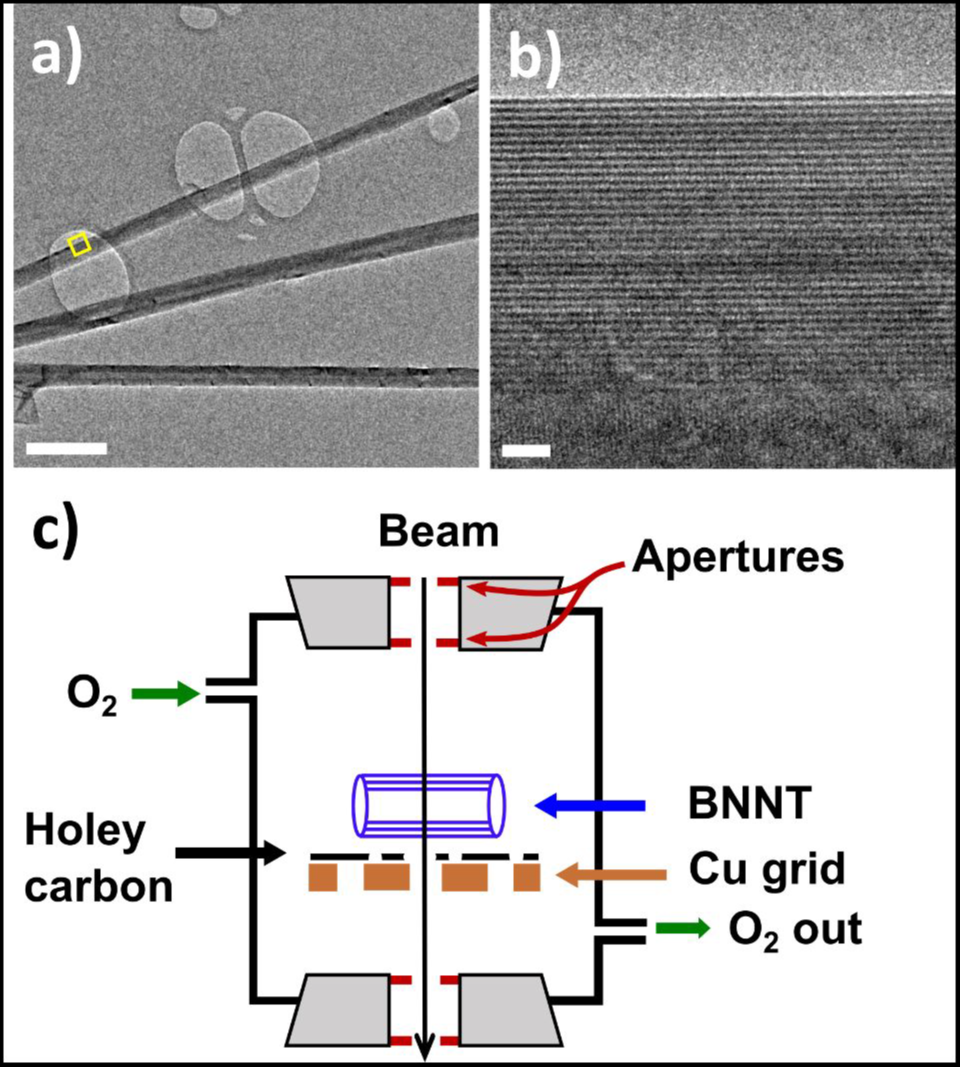Satellite Principal Investigator
Dmitri V. Golberg
We analyzed nanomaterial physical and chemical properties using state-of-the-art in situ transmission electron microscopy techniques
Resistance of Boron Nitride nanotubes to radiation-induced oxidation
Current Topics
In situ TEM analysis of diverse 1D and 2D nanostructures with respect to their mechanical, electrical, optoelectronic and opromechanical properties using a numerous nanomanipulators, optical fibers and gases inserted into the microscope column.

Fig. 1. Overview of experimental setup.
Outline of Research
We analysed the damage thresholds and pathways for boron nitride nanotubes (BNNTs) under the influence of energetic electrons in an oxidative gas environment, using an environmental aberration-corrected electron microscope over a range of oxygen pressures. We observe a damage cascade process that resists damage until a higher electron dose, compared with carbon nanotubes, initiating at defect-free BNNT sidewalls and proceeding through the conversion from crystalline nanotubes to amorphous BN, resisting oxidation throughout. We compare with prior results on the oxidation of carbon nanotubes and present a model that attributes the onset of damage in both cases to a physiosorbed oxygen layer that reduces the threshold for damage onset. Surprisingly, increased temperatures offer protection against damage, as do electron dose rates that significantly exceed the oxygen dose rates, and our model attributes both effects to a physiosorbed oxygen population.
References
- H.-Y. Chao, A.M.-C Nolan., A.T Hall, D. Golberg, et al., J. Phys. Chem. C 128, 18328 (2024). DOI: 10.1021/acs.jpcc.4c03814
Group members
-
 Dmitri V. Golberg・Satellite PI
Dmitri V. Golberg・Satellite PI
Activities
-
Jan. 16 2024
-
May. 24 2024
Links


